Directional propellers allows a vertical take off and landing on remote areas with little infrastructure.
Patagonia Explora
Patagonia Explora is an eVTOL aircraft concept inspired by the needs of scientific tourism. The electric aircraft is capable of reaching the remote regions of Patagonia and it enables a small crew of scientists and tourists to study nature. The electric powertrain reduces the noise pollution, minimizing the potential of disturbing animal populations. Monitoring animal populations and measuring changes on the terrain are some of the types of activities done on the ground. The aircraft allows the team to plan and deploy research on the field, allowing them to carry all their necessary tools and equipment. The collection of information during field trips provides data points for scientific research, which is crucial for future development of the region. The aircraft utilizes the local heliport infrastructure, while solar and wind generators provide the infrastructure to recharge the vehicle.
Project Information
Patagonia Explora is an eVTOL aircraft concept inspired by the needs of scientific tourism. It is capable of reaching remote regions and it enables scientists to study nature. With the expected increase in tourism in the region of Patagonia, the long term sustainability of the environment depends on essential information of the natural ecosystems. The role of scientific research in the field is critical to understand the impact of human presence in pristine natural environments. The exploration of remote areas and monitoring nature is essential for the collection of information about the ecosystems. These data points are used in scientific research, which enables the future development of the region. By combining science and tourism it is possible to Incorporate tourists in research expeditions. This has the potential to inspire and enable the citizens to engage in a hands-on approach. Giving them the chance to become main actors and collaborate with the creation of scientific content.
Methods
In collaboration with scientific tourism experts of the area, crucial information was gathered and current needs and future opportunities were identified. In different stages of the process, the experts provided critical feedback for the design. Making use of virtual reality tools, different vehicle packages were explored and refined digitally.
Result
The result is a flexible eVTOL aircraft concept that enables a small crew of scientists and tourists to explore remote areas in nature. The electric powertrain reduces the noise pollution, minimizing the potential of disturbing animal populations. The aircraft allows the team to plan and deploy research on the field, allowing them to carry all their necessary tools and equipment. The aircraft utilizes the local heliport infrastructure, while solar and wind generators provide the infrastructure to recharge the vehicle. In addition the aircraft is ideal for regional flights, connecting cities with smaller towns. The vehicle is also capable of providing cargo logistics to the more remote towns in the region.
UID23 | Federico Kakazu – Grad Project Presentation
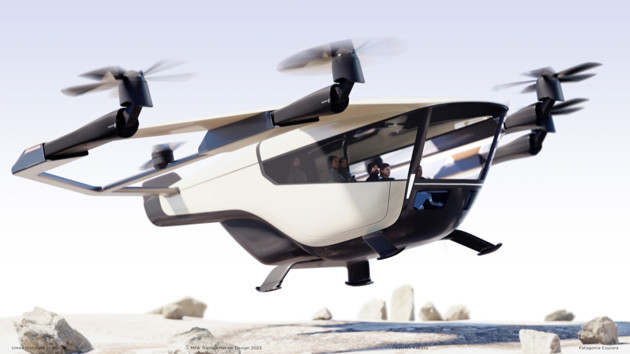

During cruise flight, the wings provide additional lift, reducing the energy consumption from the propellers.
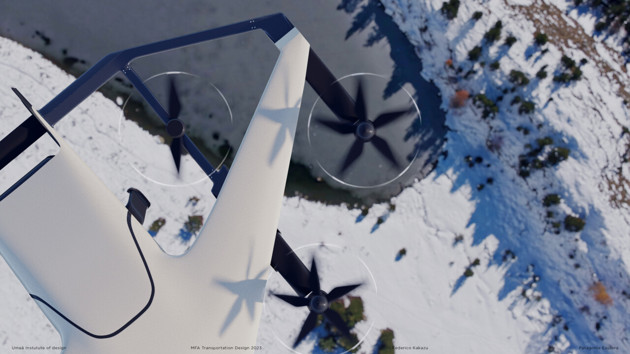
The integrated Lidar system is used for navigation and also to gather topographic changes in the landscape.
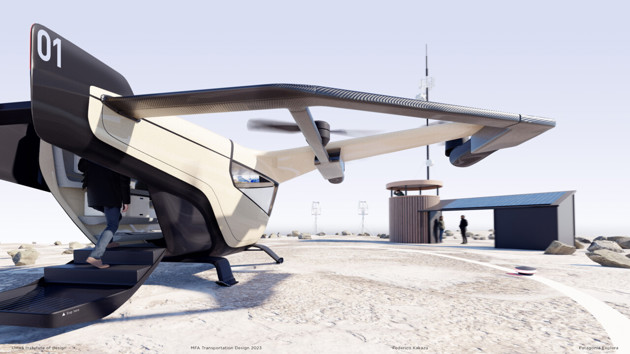
Wind and solar generators provide the infrastructure to recharge the aircraft.
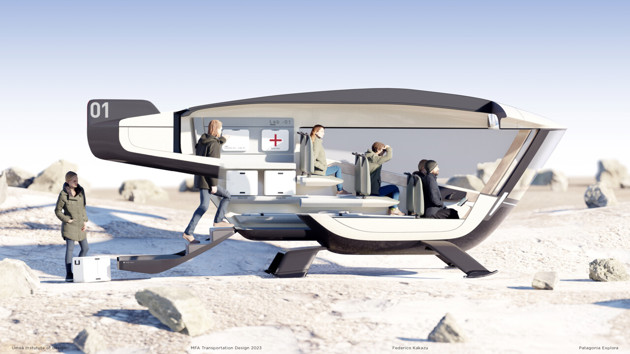
Interior configuration for 6 passengers + scientific equipment.
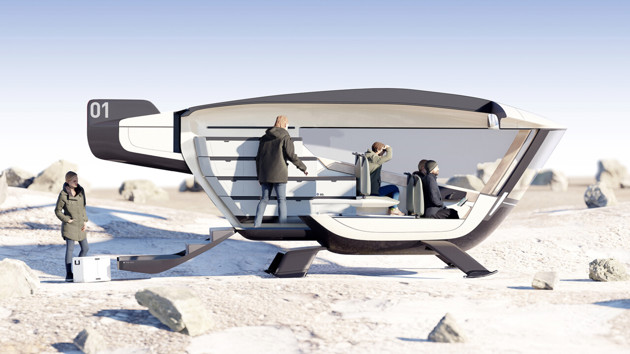
Interior configuration for 4 passengers + Cargo volume of 700l (x2).
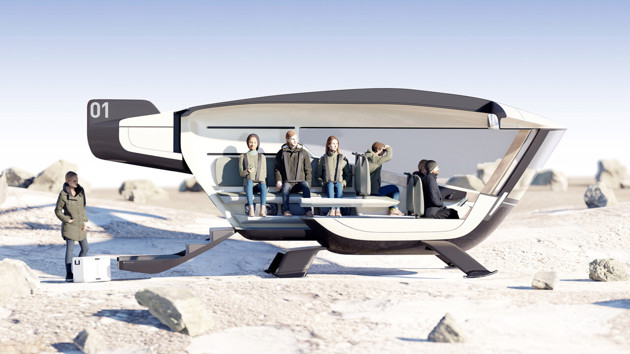
Interior configuration for 10 passengers + personal bag.

The cabin maximizes exterior view as a team during wildlife observation.

Pilot landing on remote areas assisted by external cameras and sensors.

The aircraft provides storage for equipment and supplies for a day of explorations, it also provides a small workspace.

Advanced features.
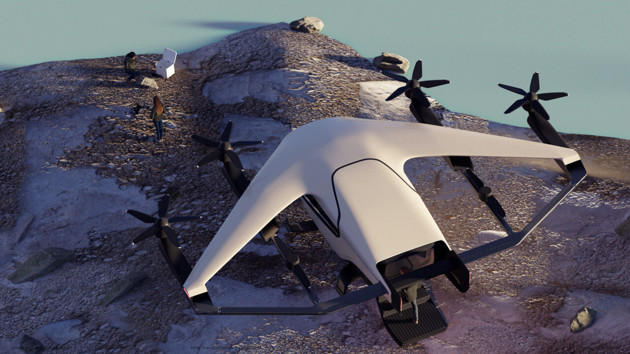
Aircraft on site.
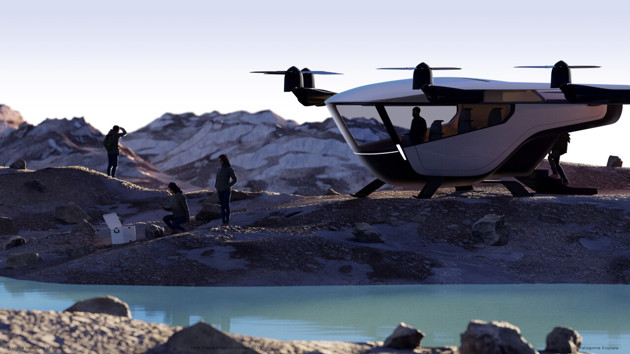
Team taking samples on site.















